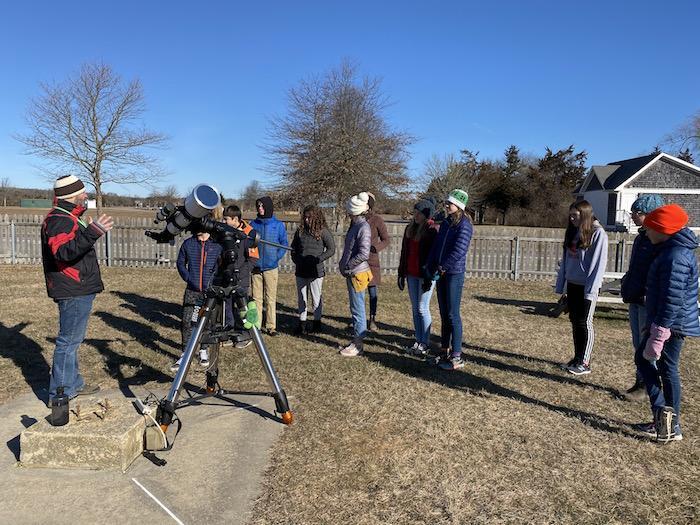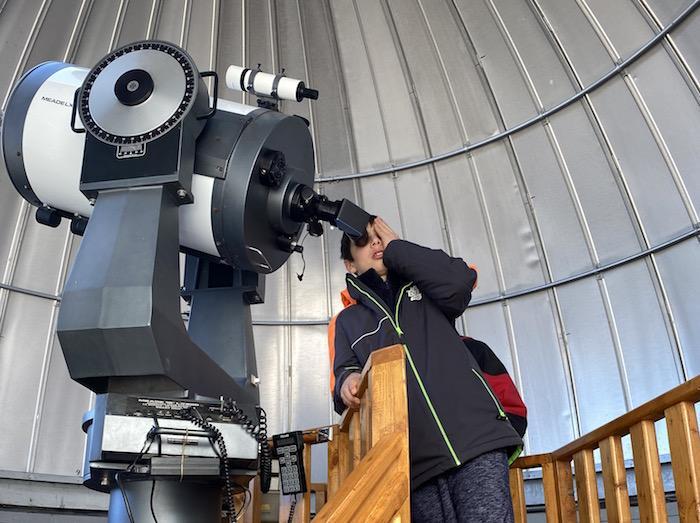Hello Quest Community! A lot has happened in these past few weeks, and the absence of the newsletters has been due in part to the cold and flu season. We in Middle School have been as diligent as possible to keep our classroom free of germs, from wiping down tables to cleaning doorknobs and handles. Bottles of hand sanitizer and tissue boxes are strategically placed around the class to make sure supplies are available when needed.
We Shall Overcome: A Celebration of Martin Luther King, Jr.
On January 21, Middle School took a trip to the Zeiterion Performing Arts Center in New Bedford to see the performance, We Shall Overcome: A Celebration of Martin Luther King, Jr. The show was based around the ideas and teachings of Martin Luther King Junior and was very uplifting to the whole class. The musicians on stage played multiple songs that were sung during the Civil Rights Movement or connected to the movement. They highly encouraged audience participation and invited students and teachers up to the stage to sing into the microphone. We all left the theater in good spirits from the feeling of community and happiness for the rest of the day.
Community Service Work
On Tuesday of this week, we had a visitor come in to talk to the class about a volunteer opportunity that Middle School’s own Service Project Manager, Isabel, has set up for us. Hollie Moone is a Vibrant Living Director at Brightview Commons and coordinates activities for the residents to enjoy. Over the next few months, Quest middle schoolers will take a number of trips to Brightview Commons, a Senior Living Center. Hollie came to talk to us about the rules and regulations of volunteering, and what activities might be available for us to assist in such as board games, art activities, and bingo.
Science: Astronomy
In science, Middle School has been working on the larger topic of astronomy. As seen in the previous newsletter by Annabel, we visited the Roger Williams Natural Museum of History and Observatory. More recently we visited the Frosty Drew Observatory at Ninigret Park. Since it was the middle of the day, we looked at the sun through two different telescopes with two different light filters. In the first telescope, we were able to see the photosphere, the layer of the sun normally visible to the naked eye. Through that telescope, the sun was a light tangerine color, and surprisingly we were able to see a sunspot, however, the sunspot was actually quite larger than the earth even though it seemed like a speck of dust through the telescope. Through the second telescope, we saw the chromosphere of the sun. We could still see the sunspot on the chromosphere, but we could also see the waves of radiation emitted by the sun. The reason that seeing a sunspot was quite surprising is because of the fact that we are currently in solar minimum. About every eleven years the sun’s magnetic poles flip, and every time they flip we enter either solar minimum or solar maximum. During solar minimum, seeing a sunspot is relatively rare, and scarcely happens. During solar maximum, sunspots are abundant and easy to spot.
We then looked through the giant observatory telescope to see the planet Venus. While we were looking at Venus, Scott MacNeill, the observatory director, talked to us about the first humans on Mars. He mentioned that 10 people who are currently between the ages of 5-21 will be the first humans on Mars. We discussed the jobs needed for the first mission to Mars such as a doctor, engineer, pilot, chemist, botanist and possibly others. The class left with significantly more knowledge of the sun and other things, as well as a motivated feeling to do something amazing.
For this science unit on Astronomy, everyone in the class researched a different ancient culture’s astronomy. Some students focused more on mythology and creation of the universe stories and others more on a monument or object that was used during the ancient time. We gathered our information for a few weeks, using different software to create a digital project that clearly and simply stated what we learned. For example, some topics were Stonehenge, Chinese astronomy, Norse mythology, and a Hawaiian sacred birthplace. Most of the class presented this Tuesday and Thursday, and the rest will be presented during morning meetings or free periods since this week concluded our science unit. Everyone worked really hard for their final products, and I’m sure we all know our topics inside out by now.
-Sydney C., your Middle School News Correspondent


